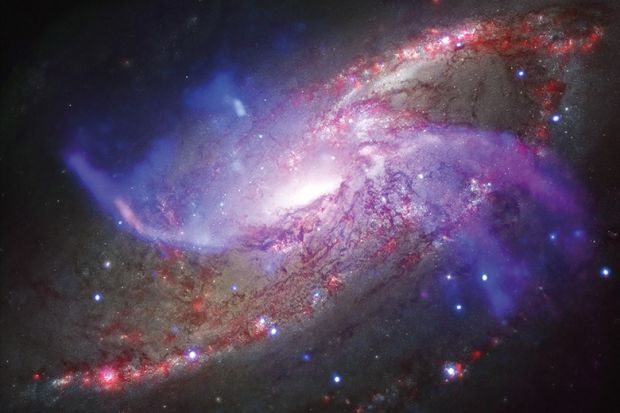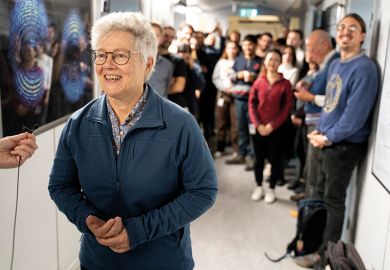In 2015, scientists with the Laser Interferometer Gravitational-Wave Observatory (LIGO) detected a “chirp”, a ripple in space-time that was the result of two black holes, each 30 times more massive than the Sun, colliding and merging. The finding was another confirmation of Einstein’s theory of general relativity and further evidence of the reality of black holes. In The Little Book of Black Holes, Steven S. Gubser and Frans Pretorius, both from Princeton University, aim to tell a general audience just how weird and wonderful black holes are.
The National Academy of Sciences in the US publishes the Science Essentials series to “bring cutting-edge science to a general audience”. Black holes are certainly cutting-edge and Gubser and Pretorius argue that, as comparatively simple objects in the universe, they are a theoretical physicist’s dream playground. However, I am not sure how much The Little Book of Black Holes would appeal to a truly general audience, with concepts such as lapse functions, optimal proper time, geodesics and Lorentz transformations to be grappled with, all before embarking on a discussion of the titular subject.
The first two chapters deal with special and then general relativity and the consequences of the relativistic worldview, including time dilation and length contraction. The authors explain Einstein’s field equations and compare them with Maxwell’s equations describing electromagnetic radiation; for this reason, among others, this book is probably best approached by those with a background, or deep interest, in physics. The book goes on to describe “simple” black holes and then more exotic examples such as spinning black holes, which drag both space and time (or, rather, space-time) around as they spin. In the course of this description, The Little Book also touches on wormholes and white holes – already familiar to viewers of the BBC television series Red Dwarf. This is followed by an account of how black holes form, what happens when they collide and how we detect their collision. Gubser and Pretorius finish by looking at black-hole thermodynamics, which requires a passing familiarity with entropy to be truly appreciated.
The book is beautifully, if densely, written, with the authors sending Alice and Bob on many adventures through space-time and tossing them willy-nilly into black holes. Reading it requires significant effort, but is rewarding for its sense of just how utterly bonkers the universe is, and how significant gaps in our knowledge remain. We are currently passing into a new era of astrophysics, where experiments such as LIGO will allow us to listen to the chirps, thumps, whistles and bangs of the universe, providing a glimpse into extraordinarily energetic events happening billions of years ago in the proverbial galaxy far, far away. The universe is humming all around us, and we now have the tools to hear what it is telling us.
Cait MacPhee is professor of biological physics at the University of Edinburgh.
The Little Book of Black Holes
By Steven S. Gubser and Frans Pretorius
Princeton University Press, 200pp, £14.95
ISBN 9780691163727 and 9781400888290 (e-book)
Published 11 October 2017
POSTSCRIPT:
Print headline: Magnetic personalities
Register to continue
Why register?
- Registration is free and only takes a moment
- Once registered, you can read 3 articles a month
- Sign up for our newsletter
Subscribe
Or subscribe for unlimited access to:
- Unlimited access to news, views, insights & reviews
- Digital editions
- Digital access to THE’s university and college rankings analysis
Already registered or a current subscriber? Login




